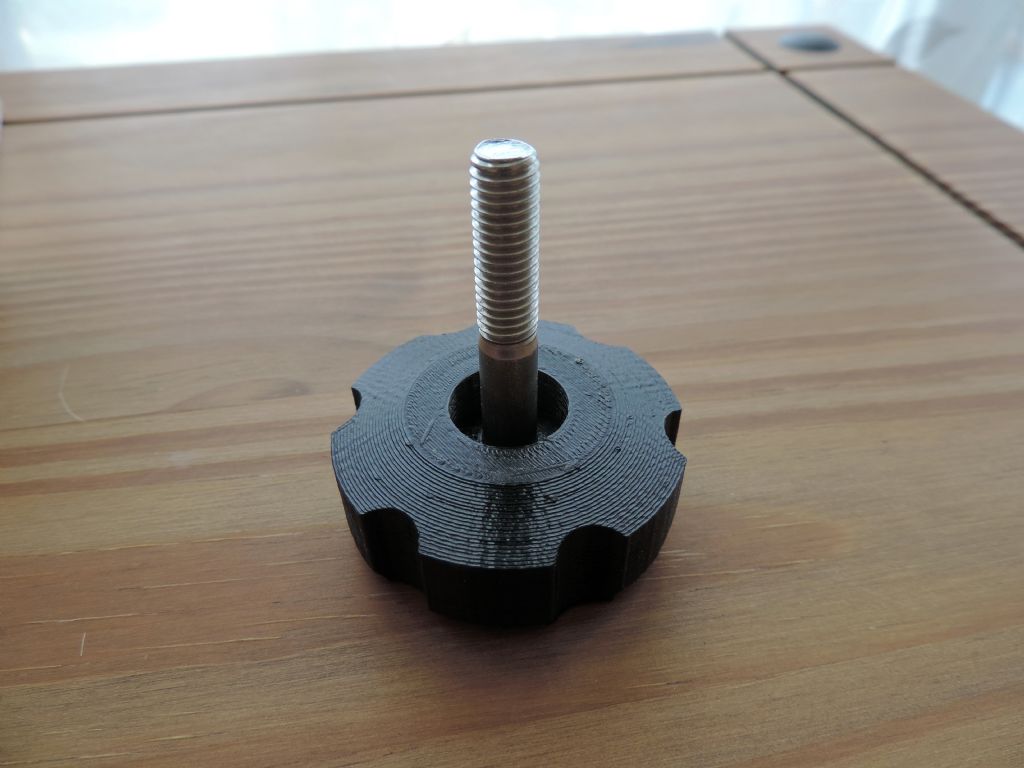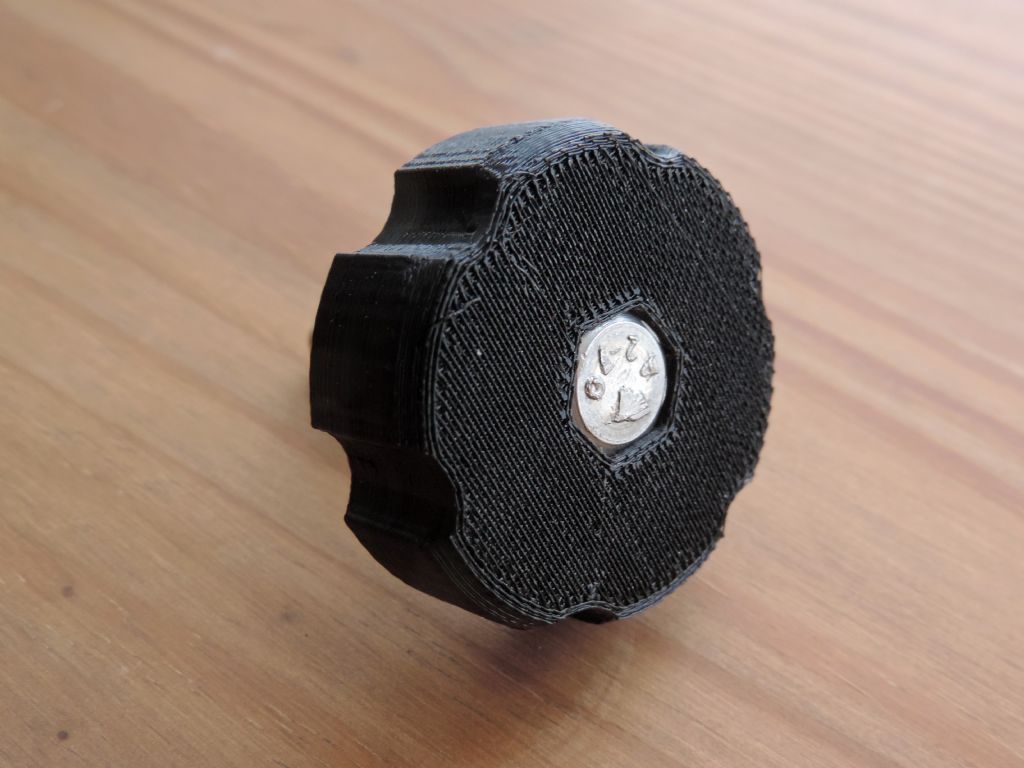Consider the kit I bought. I'm getting results the equal of what the Dremel produced. Those knobs were actually for a job I have just completed (client comment 'you like your 3D printing, don't you?'
The 0.85mm pitch thread actually printed, but was not fine enough to engage as I printed it 'dead on size'. I have enlarged it by 3% (just under 1mm) which may be a bit too much.
I like the heated bed.
It does look a bit heath robinson with the wires everywhere and the re-wiring of the PSU, but I'm going to make a dedicated cabinet for it to stand on/in which will tidy things up.
I printed a long hook that fits on top of the frame and to the spiral wrap around all the print head wires. This keeps them well above the hot bed and away from any tangling risks.
Two things so far, first it is very fussy about bed levelling. This is something you have to learn, but it does get easier (and progressively less necessary). The quality fo your first layer is a better indicator of a well-levelled bed tahn any amount of paper under the nozzle! It helped a lot when I rounded the end of the levelling stop screw AND put some PTFE tape on it to stop it slipping.
I have an old 'ARTS' model of an Americas Cup yacht, that had a lot of rather flashy chrome accessories glued on it – winches, hatches, windows etc. I want a simple R/C yacht for next time I visit my dad, so I have just knocked up replacements for all these bits and they will look OK from a distance. I had already printed all the mast furniture on the Dremel. It really is 'rapid prototyping' – you can design something and have it printed inside an hour, if it is small.
It seems to be very fussy about SD cards – it refuses to recognise one card I have and sometimes doesn't recognise the one that come with it. I suspect that my SD socket is a tad over-sensitive to vibration as after a bit of a jerk (caused by me trying to get dangling PLA off a moving nozzle) it lost communication with the card.
A few tunes ups I want, the main one is to make it lay down a strip of PLA along the front of the bed (like the Dremel) rather than dropping a loose pile at 0,0. That way I can spot if the height is wrong before too much happens.
Paul Lousick.








